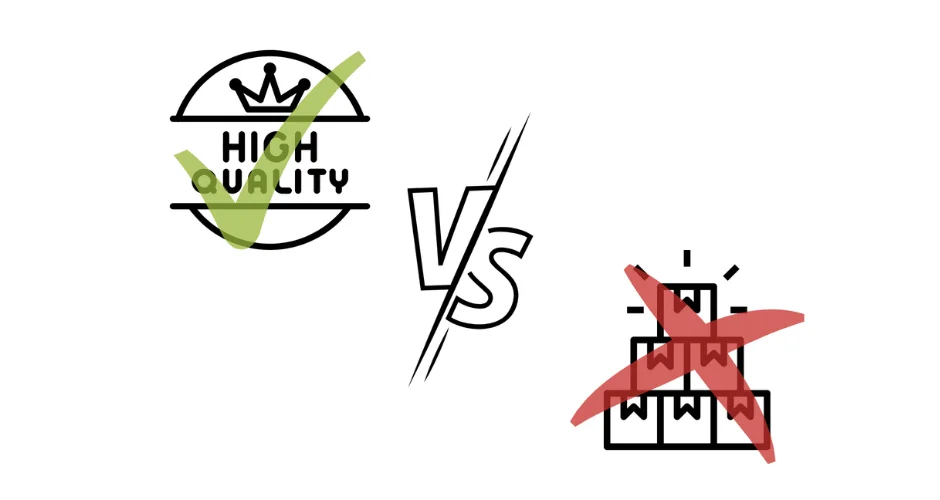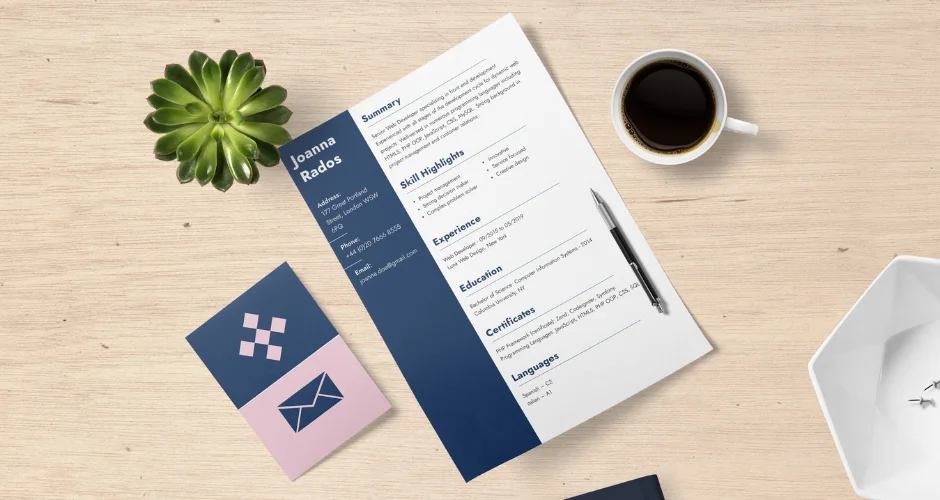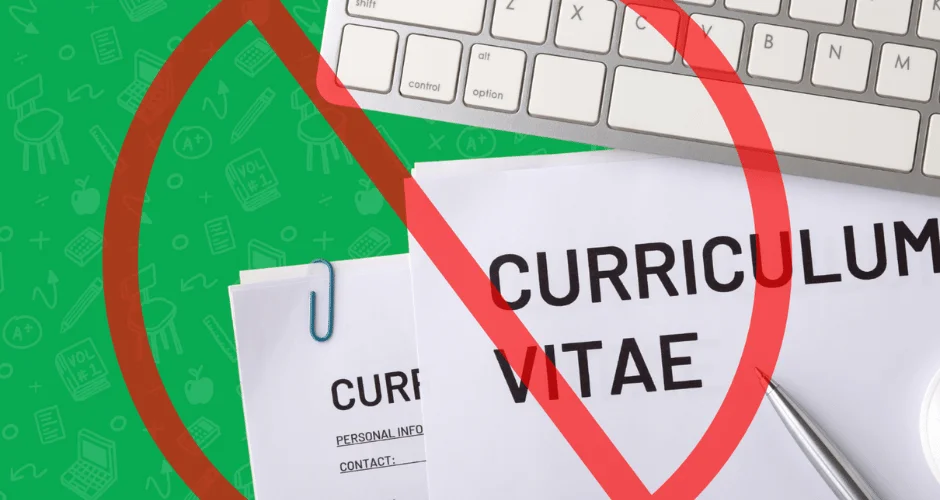How to Write Your First CV Straight Out of School | Beginner’s Guide

Looking for a job after finishing school...?
You may be stuck wondering where to start and how to write a CV to help you land that first job...
Trust us, writing an amazing CV when you have no work experience yet is simpler than you think.
In this guide, we're going to teach you how to create a CV that gets you the job you desire straight off the bat so you can start building up your experience.
First, some basics...
What is a CV? (And Why is it Important?)
A CV, or curriculum vitae, is a document that lists your accomplishments and skills related to your professional life. It's a way for you to sell yourself to potential employers.
A CV is the most standard form for initially applying to a job role, so if you don't have one, you need one! It should be a short written summary of your skills, achievements and experience that can be tweaked on a case-by-case basis to relate to the role you are applying for.
This can be difficult when you have no work experience, but almost any life experience comes with transferable skills relevant to a new role. One of the most important parts of a strong CV is being able to pick out the important lessons and skills you've learned and present them as evidence that you are the right choice for the role.
How Long Should a CV Be?
Your CV should be one to two pages long, depending on your level of experience.
If you have just left school, are a recent graduate or have very little work experience, one page should suffice. Keeping it short and sweet has key benefits:
- A busy manager or recruiter may leave CVs with a lot of pages until last (or not at all) to save them time. This puts you at the back of the queue for consideration.
- A CV that effectively presents information in a condensed but detailed format shows that you can be concise, which is a desirable skill in itself.
Just like exams, it isn't about the quantity you write but the quality.

What to Include in a CV
Contact Details
At the top of your CV, include your full name, address, email address and phone number.
If you have a professional LinkedIn profile or website, include these links as well. Make sure any content they see there is appropriate for a professional work environment! If you haven't already, consider building a professional-facing blog or website to give more evidence of your skills and interests without clogging up the page.
Make sure that the email address you use sounds professional. Something like "firstname.lastname@gmail.com" is solid. Create a brand new one if you have to!
Personal Statement / Cover Note
A personal statement is a short paragraph that sits at the top of your CV, just under your contact details.
It's very different to the UCAS personal statement as it serves more as a brief introductory overview than an in-depth essay,
It should give a brief overview of who you are as a person and professionally. 1 or 2 sentences will do here.
Include your aspirations and motivation for applying to the role. Just don't make it too long by diving into experience and qualifications here; keep it to around 4-5 lines maximum.
Education
In this section, list all of your relevant education and qualifications in reverse chronological order, so start with the most recent and work backwards.
This may include the schools you went to, including which years you attended (eg. 2020-2025) as well as the qualifications you achieved there, listing the results you got for each subject (eg. GCSE - Maths: 8, English Literature 7.....).
Make sure to mention any special roles (eg. School Prefect) you may have earned while at school, as they build a positive image of you going the extra mile and being trusted with responsibility.
If you are a recent graduate, include the name of your degree, the institution you attended, when you graduated and what merit you achieved.
If you completed any coursework, modules or self-driven projects that may relate to the roles you are applying for, mention these too.
Work Experience (If you have any, include part-time and voluntary work)
In this section, you should list your previous working roles in chronological order, starting with your most recent role.
For each role, include the following:
- The name and location of the company
- Your job title
- The dates you worked there (to the nearest month)
- A very concise list of your responsibilities and the key achievements, and the skills you learned.
As you gain more experience, it may become impractical to mention every responsibility in every job role you have ever had. Some will have much more relevant experience than others for the applied role, so try to prioritise space for the responsibilities and achievements in relevant roles first. It's fine to just mention the company, title and dates for any others.
Skills & Achievements
In this section, you should list any skills that may be relevant to the roles you are applying for. You will have learned a lot of these in school or in your own time. They should be genuine skills that you can do well and would be happy to demonstrate.
Skills can be 'hard skills', which are specific, teachable and presentable abilities related to the physical world (model making or building & fixing electronics), digital world (computer skills) or other forms of knowledge (qualifications and spoken languages).
Computer skills can include anything from Microsoft Office (Word, Excel and Powerpoint), Programming (HTML, Python), AI tools (CoPilot, ChatGPT) or social media skills (Blogging, Vlogging or Video editing in TikTok/CapCut). Be specific and mention any standout success stories, as these skills are such a large part of every job now.
Skills can also be 'soft skills', which are more like character traits or personal skills that help you interact with other people (leadership, teamwork and time management). Don't neglect these as they are almost more important than 'hard skills' since they can't be as easily taught. Just be prepared to give examples of occasions where you used them to good effect.
You should also include any awards or achievements you have received, such as the Duke of Edinburgh awards, sporting achievements or honours for music and drama.
As a student, this section will be the most important because you don't have as much work experience to bolster your CV. So pick wisely!
Interests
This section is entirely optional, but it can be a nice way to show your personality and give potential employers an insight into who you are as a person.
Keep it short and focus on hobbies that may reflect well upon you and catch the eye of someone scanning the page. You never know - you might find that the person reviewing your CV shares the same passion! The main thing is to ensure they say the right thing about you on the page and don't show any conflicts with the role.
For example, if you are applying for a job in customer service, including that you are a people person would be beneficial. If you are applying for an outdoor job, mentioning that you like hiking might also be relevant.
References
Many students get stuck on who they should include as references, so you are not alone.
As a general rule of thumb for those with job experience before, you should include two references: one academic and one professional.
An academic reference could be a teacher, tutor, lecturer or mentor who can vouch for your intelligence and work ethic.
A professional reference could be a previous employer, supervisor or someone you have done an internship with. If you do not have anyone who can provide you with a professional reference, then there is no harm in adding a second academic reference.
My advice, however, would be to make the roles of the academic references different. For example, one of them could be your maths teacher, who has seen you predominantly in a classroom environment. The other, try to include a member of support staff, like a sixth form/college administrator or head of house, who has interacted with you on a more personal level.

How to Format Your CV
There is no one-size-fits-all answer to this question. However, there are some basic formatting tips that you should follow:
- Use a professional-looking font (e.g. Arial, Times New Roman, Verdana)
- Assume the CV will be printed and needs a readable font size (10pt+)
- Make sure your margins are consistent throughout the document
- Use headings and subheadings to break up sections of your CV for easy reading

Which Software Should I Use to Make My CV?
The most common software used to create a CV is the old, reliable Microsoft Word. You can't go wrong with it.
It will give you plenty of basic format options that will convey a nice, simple aesthetic. Remember to use a white page, with minimal additional colours in your layout. Stick to black text, ensuring it is readable on any coloured backgrounds and a professional font to keep things looking professional.
But if you want to add a little flair and some more creative options for layout, then it is certainly worth looking into using something like Powerpoint or Canva to create the PDF. These programs offer a lot more flexibility when it comes to playing around with the layout and design of your CV.
What Not to Include in a CV
Your CV should be a positive representation of you and your abilities. There are some things that you should avoid including:
- Inaccurate or out-of-date information
- An unprofessional-looking email address
- A photograph of yourself
- Exaggerated or untrue claims about your skills or experience
- Any mention of your personal life or politics
- Too much text squeezed together onto one page
- Spelling and grammar mistakes

How to Write the Perfect CV
There is no single answer to this question as it will vary depending on your skills and experiences. However, there are some general tips we cover in another blog that you can follow to make your CV stand out, regardless of whether you lack the right work experience.
What Do I Do Once I’ve Written My CV?
Once you are happy with your CV, I would recommend showing it to a friend or family member to review. They can then provide feedback on certain aspects. If you can, send it to multiple people, as not every recruiter will be the same. The more people you show, the more opinions you will get to help better your CV.
The next step may be trivia, but you would be surprised at how important it is.
How Do You Save Your CV file?
The most common and basic mistake is to save it as a basic Microsoft Word document or PowerPoint file. When you send these file types can leave a very basic impression on the recruiter; they perceive it as a lack of effort not to follow through and can prejudice your application.
When you have finished your final draft, remember to save the file as a PDF. If you need help on how to do that, you can find it by clicking here.
Get Help With Your CV
If you are struggling to write a professional CV, many services can help. Dozens of websites offer CV templates and examples.
Alternatively, if you feel like you need the extra support, then why not check out our online tutors available to help with CVs, personal statements and cover letters. They are best placed to give you tailored advice on how to achieve your dream job.
Parents
Students
Looking for a tutor?
Sherpa has hundreds of qualified and experienced UK tutors who are ready to help you achieve your goals. Search through our tutors and arrange a free 20 minute introduction through our industry-leading online classroom.
Find a TutorSimilar Articles




